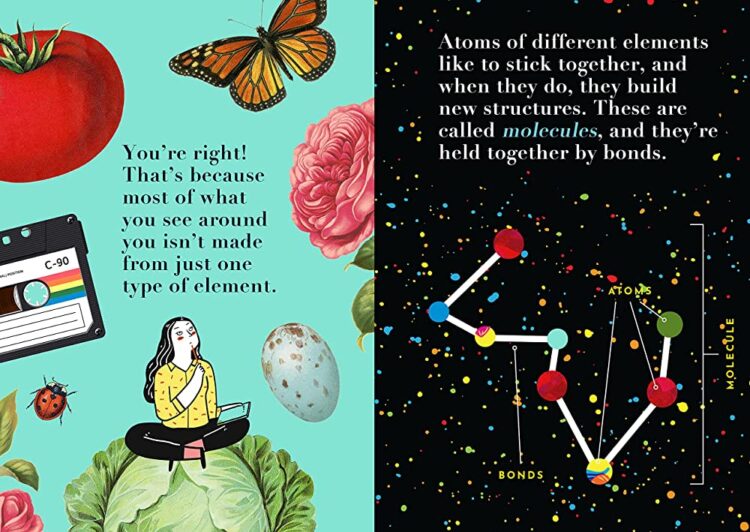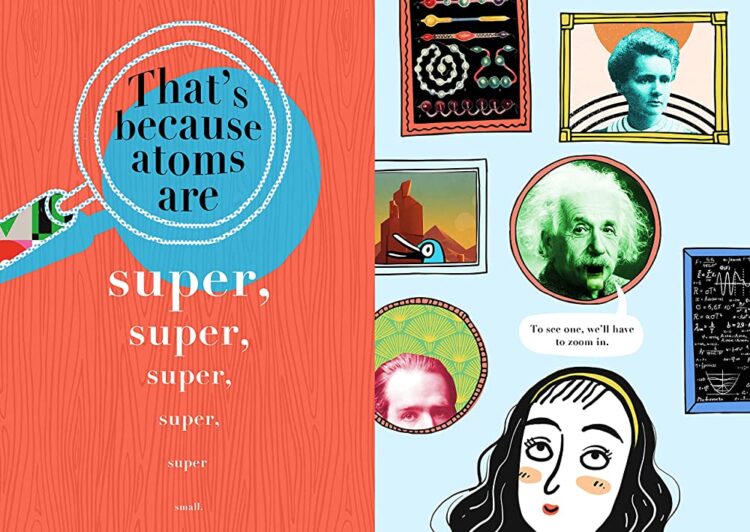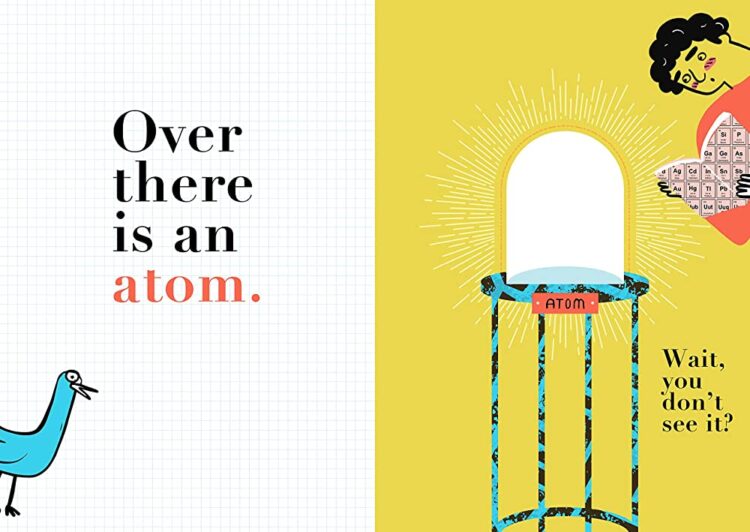If Andy Warhol designed a STEM book centered around small things he would’ve created Atom The Building Block of the Universe. Atom is a compact illustrated book that makes the complex seem simple but also acknowledges that it certainly can be confusing. It does this with absurd graphics, by comparing odd things and layering it all against a sea of dots that would make Nancy envious. *

Mastering the differences between elements, protons, neutrons, and atoms can be really tricky for students. Aside from elements they’re unable to see them, and even then, unless it’s a lump of coal, it’s something abstract, hard to find, or expensive. The closest that kids in my middle school science classroom will ever see with me and gold is the ring on my finger. The lamp, plastic bin, poster board, and compressed wood that make up their desks aren’t pure elements. To effectively teach ages seven and up the building blocks of life, you need to start at the very basics.

Unfortunately, that very basic item is something that they can’t see, which is where the book starts off. A pigeon is pointing out to readers that there’s an atom over there in the empty cage that it’s pointing to. When readers silently acknowledge that they can’t see anything the pigeon simply encourages them to zoom in to a ridiculous degree. We then see a photograph of Albert Einstein with his mouth open like a puppet, pointing to a seemingly empty spot on the page.
Why can’t you trust an atom? Because they make up everything. While that classic elementary school joke is not in the book, it goes on to illustrate that atoms make up everything. Atom, the book, then asks us to imagine that a baseball has been enlarged to the size of Earth. It compares that growth and says that if an atom grew at the same rate then the atom would be the same size as a blueberry. This is where the pigeon comes back to playfully peck its beak at the scale-model atom.

Then, just as silly as those pages are, it immediately jumps into how atoms are made up and introduces us to protons, neutrons and electrons. We’re told that Niels Bohr created the planetary model and the theory that electrons rotate around the nucleus. But then, we’re told that due to the work of more modern scientists like Erwin Schrodinger, it’s believed that they behave more like energy that’s dispersed via a wave. The book goes on to provide an overview of the Periodic Table, the difference between elements, molecules and substances. It also gives an answer to the age-old question of why there isn’t a cheesious-pizza molecule.
The quirky illustrations that consist of clip art, retro graphics, photographs, feed the succinct text perfectly for those young audiences, or those who think that they know. I’m certainly one of those who think that they know because when I have to explain it all to young scientists, I fumble the terms when I don’t think about them first. Atom ends with a laugh and even has a photographic tour of the key players in atom’s history, complete with a short biography for those readers with a big brain that want to learn more.
Atom: The Building Block of the Universe is by David Miles and is available on Bushel & Peck Books.
There are affiliate links in this post.
*Sidenote: Nancy, the Brillo-haired protagonist has been rebooted and is now producing some top-notch entertaining graphic novels, a la, the classic comic strip, for today’s elementary school readers.





 Facebook
Facebook Twitter
Twitter Flickr
Flickr GooglePlus
GooglePlus Youtube
Youtube